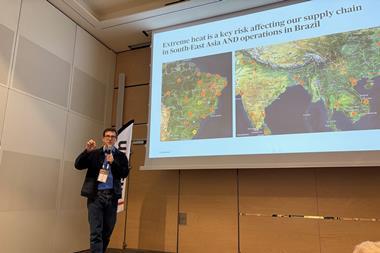A new healthcare law in the USA could spark the growth of employee benefit captives, says Helen Yates
Captives have been used to insure or reinsure employee benefit programmes, including life, disability, pension and medical covers, since 2000. While there has been steady growth and a great deal of attention paid to this burgeoning class of business, it has yet to really take off. Unsurprisingly, it is in the USA, home to many of the world’s largest employers and some of the most expensive and volatile benefits – particularly healthcare – where captives catering to employee benefits have developed the most.
And the sector could soon gain momentum. In March, president Obama signed his landmark healthcare bill into law. In the past, employers have typically considered captive insurance for their medical programmes because of the high cost of healthcare.
While the aim of the new law is to bring the cost of healthcare down, it could nevertheless provide a new opportunity for employee benefit captives.
“The legislation allows for the creation of healthcare co-operatives that need to be owned by their members, be a licensed entity, be regulated and be not for profit,” Milliman principal and consulting actuary William Thompson says. “So it feels like a group captive type of arrangement might fit the bill. What’s unclear yet is what the regulations are going to say so far as the structure of those, and whether a captive can do it or not. But that could create a potential opportunity for healthcare captives in the USA.”
TYPICAL STRUCTURES
Two types of captive structure are typically associated with employee benefits. The first is where an existing single-parent captive is used to reinsure the company’s employee benefits (such as group term life insurance and long-term disability). As well as helping the parent company to better control the costs associated with those benefits, it also brings certain tax benefits if the captive is domiciled in the USA.
Thirteen corporations had reinsured their group benefit programmes through their US based captives in 2008, according to Aon (Columbia Energy, Archer Daniels Midland, International Paper, SCA, Alcon, Alcoa, Sun Microsystems, AstraZeneca, Heinz, AGL Resources, Wells Fargo, Cephalon and United Technologies). The broker was also aware of several pending applications from other organisations.
From an enterprise risk management perspective, using existing captives for employee benefits can offer significant diversification benefits. “For those employers that already have a captive, typically for property casualty, it’s a more efficient use of their capital, as the employee benefits tend not to be correlated with the property casualty side,” Thompson says. “So, if you have a good year in one, you may have a bad year in the other.”
So far, these single-parent captives have underwritten employee benefits in addition to the captive’s core business. “The savings you’d be getting by adding the employee benefits to the captive are not enough to justify setting one up,” Thompson says. “So typically it works for employers that already have a captive in place and this becomes an add-on line.”
Running benefit programmes through an existing captive as a subsidiary line also offers tax advantages for parent companies with US domiciled captives. Employee benefits are considered to be ‘unrelated’ business by the US Internal Revenue Service. If the captive has enough of this third-party risk (at least 30% of its insurance business), it is considered a bona fide insurer, meaning that its loss reserves become tax deductible.
In this structure, the employer will normally use a fronting carrier, which will carry out the administration, including issuing policies to employees, but will then reinsure with the employer’s captive, passing the bulk of the premium back to the employer.
Additional layers will be purchased on top of the captive to cover catastrophes or accumulation losses.
“The issue that can come up with healthcare especially is that some claims may be extremely high on the individual basis, and there is the accumulation effect, so you need some reinsurance on top of the captive,” Kane Global consultants Clive James says.
The second structure is a pooling type of arrangement, whereby a number of employers come together to form a captive to insure or reinsure their medical benefit plans, typically as stop-loss covers. This is gaining attention in the USA as a solution to rising healthcare costs and is more accessible to smaller employers. Dallas-based American Construction
Benefits Group (ACBG) is typical of this type of captive solution. Owned by ACBG and five construction industry shareholders, the captive was put together in 2005 to reduce the cost of health benefits for its member companies by using group purchasing power to gain better services at a lower premium. “Like many of us in the industry, I had become very frustrated by the skyrocketing costs of employee health benefits,” Heussner Insurance Agency president and founder of ACBG, Steve Heussner, says.
SPIRALLING COSTS
While president Obama’s reforms should go some way to resolving the cost of health insurance, the pooled approach is likely to remain an attractive solution for larger employers, thinks Thompson.
“For employers that want to continue to take control of their healthcare benefits, even after the passage of the new healthcare law in the USA and the impacts that may have down the road, the opportunities are still there.”
The reforms, which will cost $940bn (€731.4bn) over 10 years, will expand cover to 95% of Americans, compared with 83% covered today, and will tax employers offering pricier plans. Individuals with existing medical conditions will be covered under the new healthcare law. “It will take four years to implement these reforms fully because we need to implement them responsibly,” said president Obama at the signing-in ceremony in March. “But a host of desperately needed reforms take place right away.”
While healthcare costs have been subject to a great deal of volatility in recent years, the financial crisis has forced the need to control the expense of other employee benefits up the agenda. And not just in the USA. Pension reserves were hit substantially by the downturn, with global pension fund assets down 20% (representing more than $3 trillion) at the end of 2008, according to the Organisation for Economic Co-operation and Development. Ireland, the USA, the UK, Canada, the Netherlands, Australia and Japan took the brunt of the losses.
What was once a human resources issue has increasingly become an insurance issue, James believes. “The issues with pensions over the past three years have really changed the focus on employee benefits and how they’re viewed in the organisation,” he says.
“As a consequence I think over time more and more employee benefits will move into captives. It’s not going to be done overnight because it’s a long-term play on this but I’d expect the growth to be fairly consistent year-on-year.
“One of the major concerns, and this applies for all captives, is the volatility of pricing,” James continues. “And one of the problems chief financial officers and treasurers have is trying to manage and control the budgetary process so that they know roughly what the insurance costs are going to be over the next few years. By managing your own risk and the claims that go through, that provides much more stability in their pricing.”
Postscript
Helen Yates is a freelance journalist




















